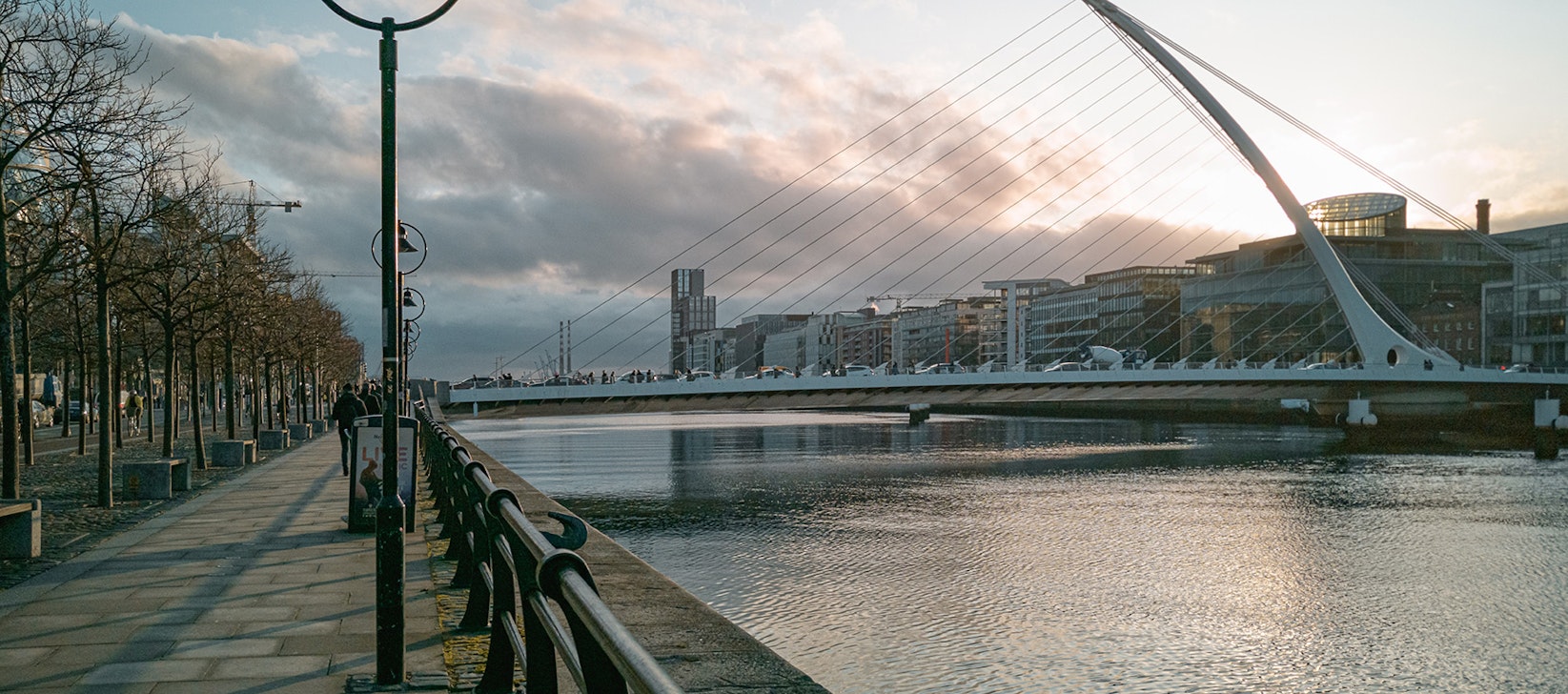Working as a place consultant means it’s hard to avoid recovery strategies as we move into post pandemic mode. But recovery indicates we need to get back to where we were before the malady of the pandemic. The fundamental issue with the concept of recovery is that it lacks ambition – places need to do more than recover – and Dublin has a unique opportunity to rediscover, reinvent and reposition.
Like the pandemic itself, the effects on place have been uneven and a city like Dublin, that was a strong performer pre-pandemic, should not be content to bounce back. Time to use our collective creative genius and imagine what better looks like. Progress, not regress.
Two factors guide us on this journey – classic demand and supply factors. Where we were before and how we position to exploit the new trends.
Place performance pre-pandemic is critical to this. eutopia has a place attractiveness diagnostic tool that benchmarks all counties in Ireland for overall place attractiveness by each of the four “pillar” areas of Invest, Live, Visit and Study. It’s a pure data driven approach designed to help places identify how they benchmark and rank against competing locations and to support place development and place marketing. The 40+ datapoints gathered and the weights applied determine the scores.
Time to use our collective creative genius and imagine what better looks like. Progress, not regress.
Ireland’s Second Most Attractive Location
In the Irish model, Dublin doesn’t rank as the number 1 location across all four pillars. Dublin is the untouchable champion for Investment and Study in Ireland, but is not in pole position for Liveability and Tourism.
But maybe this is not such a revelation. Dublin’s transformation to an economic powerhouse came with a luxury goods’ price tag. This is not uncommon for centralised economic hubs – the same goes for Paris and London. There was a willingness to shrug the shoulders and keep paying the price – particularly on the Liveability front where Dublin ranks below Cork primarily due to house prices but also crime rates.
However, the pandemic has seen skills and opportunities become mobile and therefore quality of life no longer needs to be a compromise.
Tourism scores are impacted by natural assets and tourism attractions and here Cork also just pips Dublin. This is mainly due to the former, but Cork has also worked harder on the product development and promotion front.
The diagnostics also highlighted the extent of the gap between Dublin and the rest of the country for foreign investment but there are challenges ahead. Mark O’Connell, CEO of FDI specialists OCO Global, commented that:
Dublin is already an established ‘global’ capital in FDI terms and post Brexit, post pandemic, with a Biden led US administration, it has a unique opportunity to advance its ambition as the only English speaking European HQ. However, increasingly FDI has a social conscience and only those locations that can present a balance of lifestyle, affordability, inclusion as well as skills will stay in contention. Tax is no longer the only game in town and is indeed threatened by BEPS and other harmonisation policy shifts.
Mark O’Connell, CEO of FDI specialists OCO Global
The Vista Model Segmentation for Dublin

- Tier 1 County region with major urban hub
- Key national and international hubs for investment
- Proven track record with multiple large blue chip investors
- Cross sectoral strengths
- Robust track record
- Resilient due to sector spread

- Multicultural centre
- Highly developed infrastructure
- Access to extensive range of cultural experiences
- Access to extensive hospitality and leisure / robust night time economy
- Highly developed retail options
- Access to senior roles and career options
- Higher cost of living

- Cultural magnets with international and domestic appeal and multiple attractions
- Includes major urban centres or regions with strong brand reputation in tourism
- Ease of access for international and domestic travellers
- Year round appeal to multiple segments in tourism market
- Strong tourism infrastructure

- Higher volume of students
- Prestige (National) universities that are financially secure
- Attractive to international students as well as domestic base due to mixture of quality of institution and the place factor combined
- Focus on R&D and linkages with major employers
- Typically higher living costs to study
Repositioning for the Future
In terms of how Dublin repositions for the future, the demand side trends provide opportunity. Remote working has been posited as a threat for Dublin – but actually provides a unique opportunity to fix the over-heating that made Dublin a victim of its own success.
Congestion and access now have to be addressed – integrated sustainable transport models for all cities are no longer on the long finger.
It’s not just an opportunity for smaller cities, towns and even rural areas, it’s also an opportunity to rebalance within Dublin itself.
Congestion and access now have to be addressed – integrated sustainable transport models for all cities are no longer on the long finger. The hybrid working model is likely to dominate which will provide some relief, but that hybrid model and bringing workers and residents back into the city will be predicated on ease of access and meeting an increased environmental consciousness.
Going Back to Our Roots
Part of reinvention and repositioning is going back to our roots. The business class overtook the creative class in Dublin, yet the latter is seen by many urbanists like Richard Florida as a critical success factor for cities. There is a chance to revive that heritage. Not just for residents, but for tourists who are demanding more authenticity and cultural return for their visitor dollars. Increasingly, this creative class is also a deciding factor for where businesses want to locate and where events happen. Dublin has the opportunity to re-establish as an unqualified place leader, in Ireland and beyond. The pandemic is perhaps just the miracle cure the city needed.





